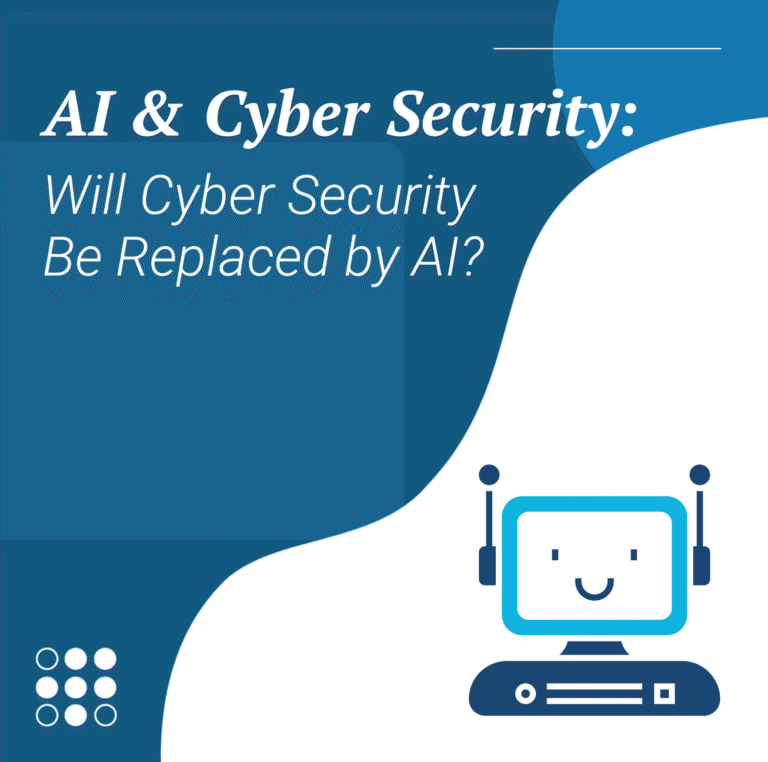Protecting your organization
in 2026 – why cyber security is important
In today’s digital landscape, cyber security is no longer just an IT concern. It’s a critical component of business strategy. With cyber threats evolving rapidly, understanding the significance of cyber security is essential for organizations of all sizes. This article explores the current state of cyber security, its importance, and actionable steps to safeguard your business.
Understanding what cyber security is
Cyber security is a critical aspect of information security, focusing on protecting computer systems, networks, and data from cyberattacks, unauthorized access, and damage. While often used interchangeably with information security, cyber security specifically addresses the technical controls involved in defending computer systems and networks. In contrast, information security encompasses a broader scope, including administrative and physical controls to safeguard various forms of information, such as digital data, physical documents, and intellectual property.
At its core, cyber security aims to ensure the confidentiality, integrity, and availability of information. These principles are essential in protecting sensitive data from unauthorized access, alteration, or destruction. To achieve this, cyber security employs a multi-layered approach that integrates various tools, processes, and strategies.
The three pillars of information security
There are three primary categories of information security:
1. Technical Protections:
This encompasses the tools and technologies used to secure networks and devices. Examples include firewalls, antivirus software, encryption, and intrusion detection systems. These technical measures are designed to prevent unauthorized access and detect potential threats.
2. Administrative Controls
These are the policies and procedures implemented to manage the organization’s information security posture. They include access control policies, security awareness training, incident response plans (along with tabletop exercises), and regular audits. Administrative controls ensure that security practices are consistently applied and that employees are informed about potential risks.
3. Physical Security:
This involves measures to protect the information from unauthorized physical access. It includes lockable filing cabinets, securing server rooms, restricting access to sensitive areas, and implementing surveillance systems. Physical security is crucial in preventing unauthorized physical access to critical systems and data.
By integrating these three pillars, organizations can establish a comprehensive information security strategy that addresses various potential vulnerabilities and threats.
Cyber security is important, but so is a holistic approach
While technical controls are vital, focusing solely on them can leave gaps in an organization’s security posture. Cyber criminals often exploit human factors, such as social engineering tactics, to gain unauthorized access. Therefore, administrative controls, like employee training and clear security policies, play a crucial role in mitigating risks.
Furthermore, physical security measures are essential to protect against threats that cannot be addressed through technical or administrative controls alone. For instance, unauthorized physical access to a server room can lead to data breaches or system compromises.
In summary, understanding cyber security requires recognizing its role within the broader context of information security. By adopting a holistic approach that integrates technical, administrative, and physical controls, organizations can better protect their assets and data from the evolving landscape of cyber threats.
The rising costs of cyber crime
The financial impact of cybercrime is staggering. In 2023, global cybercrime damages were estimated to reach $8 trillion, with projections estimated a rise to $10.5 trillion in 2025. This makes cybercrime one of the most lucrative criminal activities worldwide (Cybersecurity Ventures).
The average cost of a data breach varies by region. In the United States, the average cost was approximately $9.48 million, while in Canada, it stood at $5.13 million (University of San Diego Online Degrees). These figures highlight the significant financial risks organizations face without adequate cyber security measures.
Emerging cyber security threats
Cyber threats are becoming more sophisticated and diverse. In 2025, several key trends have emerged:
AI-Powered Attacks
Cybercriminals are leveraging artificial intelligence to conduct more effective attacks. A recent report revealed that 62% of organizations experienced AI-driven cyberattacks, including deepfake audio and video impersonations (IT Pro).
Ransomware Resurgence
Ransomware attacks have seen a resurgence, with high-profile incidents disrupting operations across various sectors. For instance, a ransomware attack on Collins Aerospace affected airport check-in and baggage drop services across Europe (Reuters).
Third-Party Vulnerabilities
Attacks targeting third-party vendors have increased, emphasizing the need for comprehensive supply chain security. Cybercriminals exploit weaknesses in third-party systems to gain unauthorized access to primary networks.
The importance of cyber security measures
Implementing robust cyber security measures is crucial for several reasons:
Safeguarding Reputation
A data breach can damage an organization’s reputation, eroding customer trust. Proactive cyber security measures demonstrate a commitment to protecting stakeholder interests.
Protecting Sensitive Data
Organizations handle vast amounts of sensitive information, including personal data, financial records, and intellectual property. Cyber security ensures this data remains confidential and secure.
Maintaining Business Continuity
Cyberattacks can disrupt business operations, leading to downtime and financial losses. Effective cyber security strategies help maintain operational continuity.
Regulatory Compliance
Many industries are subject to regulations that mandate specific cyber security practices. Compliance helps avoid legal penalties and protects organizational reputation.
Real-world applications and case studies
Many organizations have faced significant challenges due to inadequate cyber security. A few noteworthy case studies:
- Arup: In 2024, a global engineering firm fell victim to a social engineering attack that used both email and deep fake videos, resulting in fraudsters stealing $25 million USD.
- Equifax: In 2017, Equifax experienced a data breach affecting approximately 143 million individuals. The breach resulted in over $4 billion in damages, including legal fees and settlements.
- Yahoo: Yahoo disclosed in 2016 that all 1 billion of its user accounts were compromised in a 2013 breach. The incident led to a $350 million reduction in its sale price to Verizon.
These cases underscore the critical need for robust cyber security frameworks to prevent and mitigate potential breaches.
Benefits of strong cyber security practices
Investing in cyber security offers numerous advantages:
- Risk Mitigation: Proactive security measures reduce the likelihood of successful cyberattacks.
- Cost Savings: Preventing breaches can save organizations from the high costs associated with data loss, legal fees, and reputational damage.
- Customer Trust: Demonstrating a commitment to cyber security enhances customer confidence and loyalty.
- Competitive Advantage: Organizations with strong cyber security practices can differentiate themselves in the marketplace.
Challenges in implementing cyber security
Despite its importance, several challenges hinder effective cyber security implementation:
- Resource Constraints: Small and medium-sized enterprises often lack the resources to invest in comprehensive cyber security measures.
- Skill Shortages: There’s a global shortage of cyber security professionals, making it difficult for organizations to build and maintain effective security teams.
- Evolving Threat Landscape: Cyber threats are constantly evolving, requiring organizations to adapt their security strategies continuously.
- Complexity of Systems: The increasing complexity of IT infrastructures, including cloud services, IoT devices, and AI, complicates security efforts.
The future of cyber security
Looking ahead, several developments are shaping the future of cyber security:
- Integration of AI and Automation: The use of AI and machine learning in cybersecurity is growing, both by criminals and security professionals.
- Zero Trust Architectures: Organizations are adopting zero-trust models, assuming that threats exist both inside and outside the network, and verifying every request as though it originates from an open network.
- Increased Collaboration: There’s a growing emphasis on collaboration between public and private sectors to enhance cyber security resilience.
- Focus on Cyber Hygiene: Regular updates, employee training, and adherence to best practices are becoming standard components of cyber security strategies.
Conclusion
In conclusion, understanding why cyber security is important is essential for safeguarding organizational assets and maintaining trust in an increasingly digital world. By staying informed about emerging threats and investing in robust cyber security measures, organizations can protect themselves from the potentially devastating impacts of cyberattacks.



